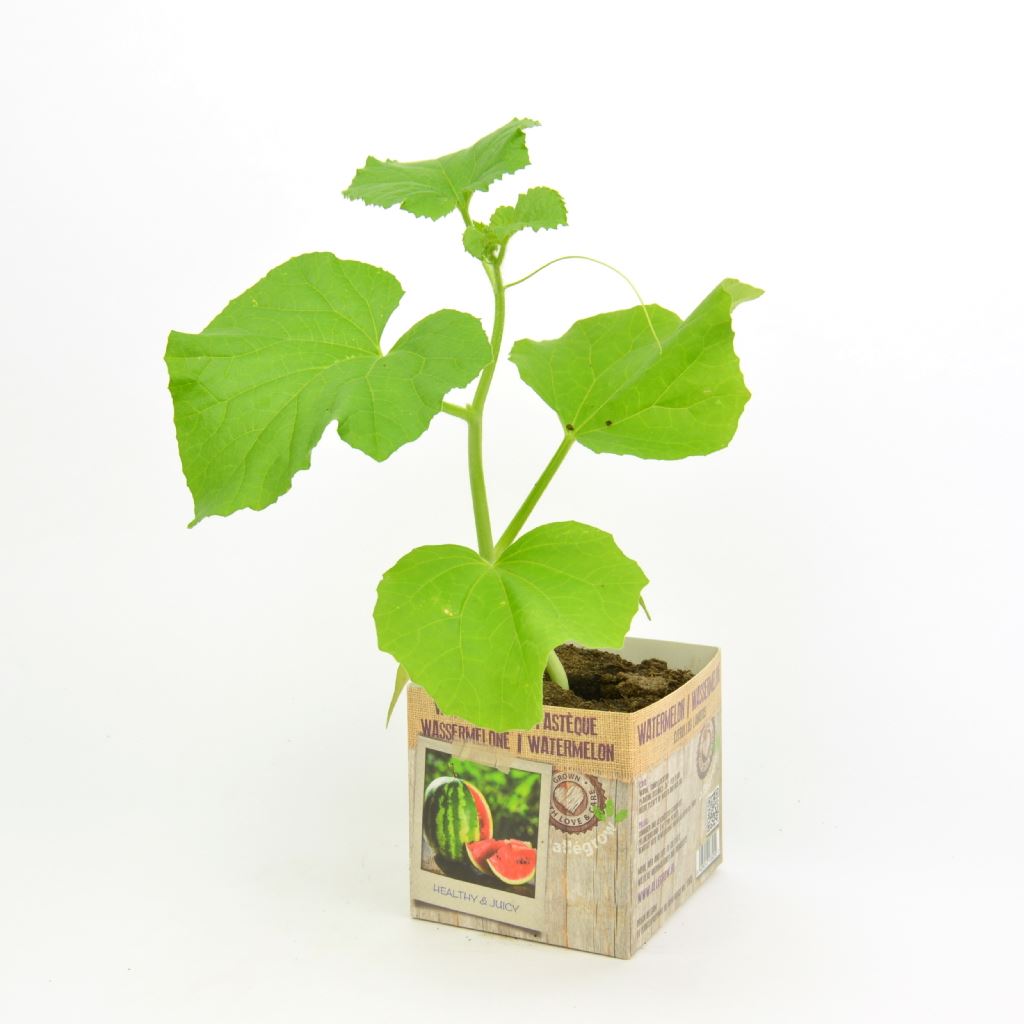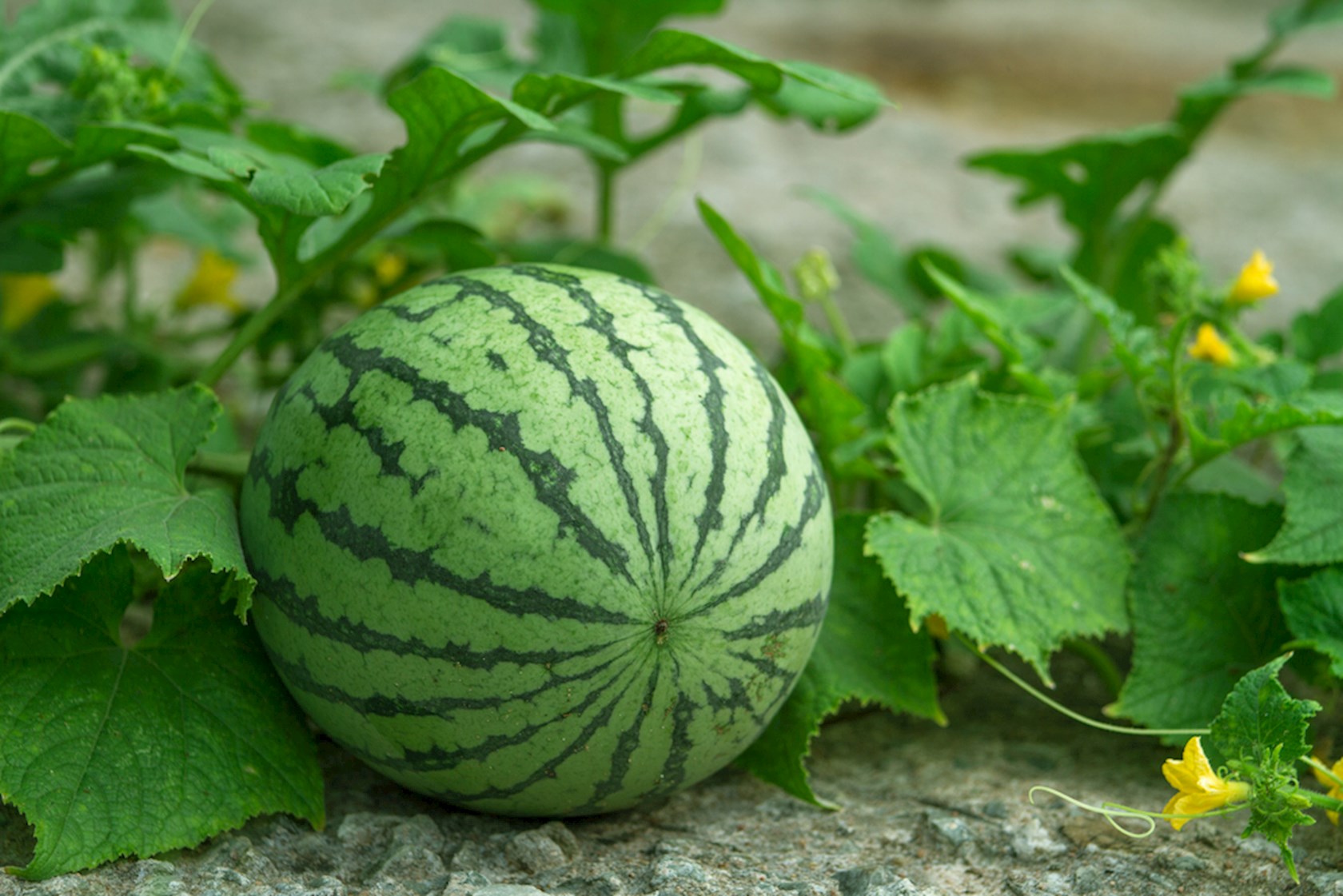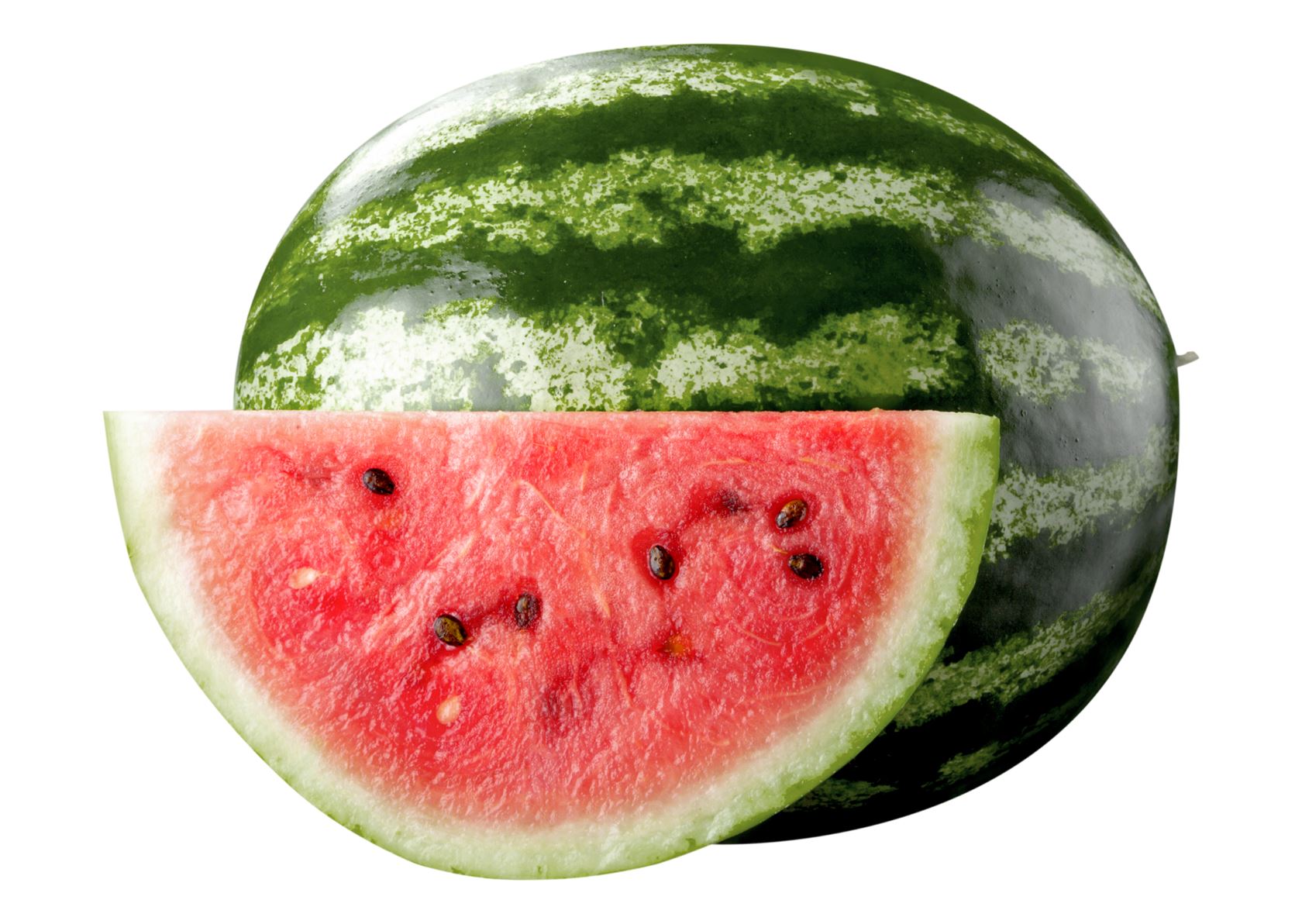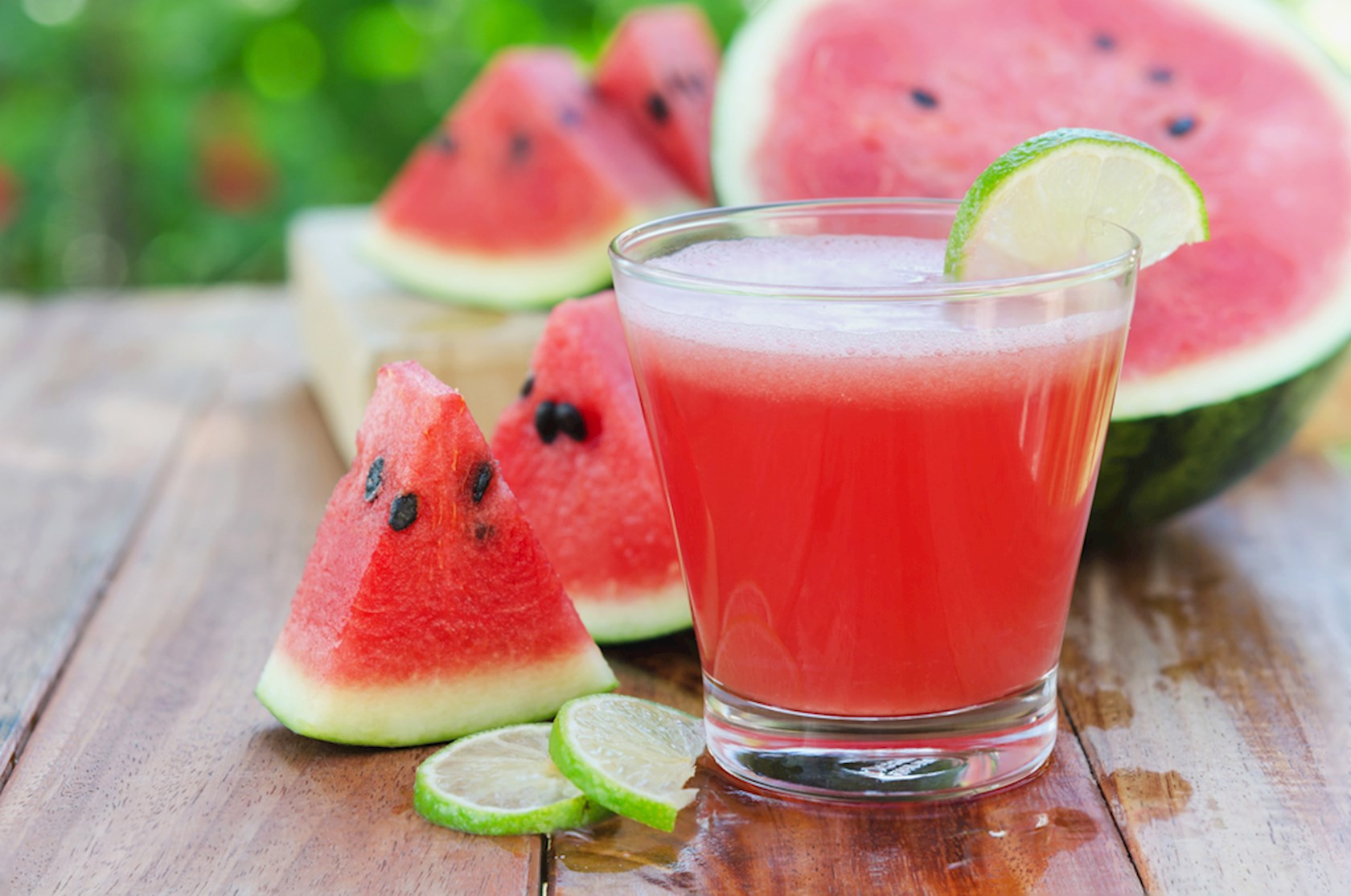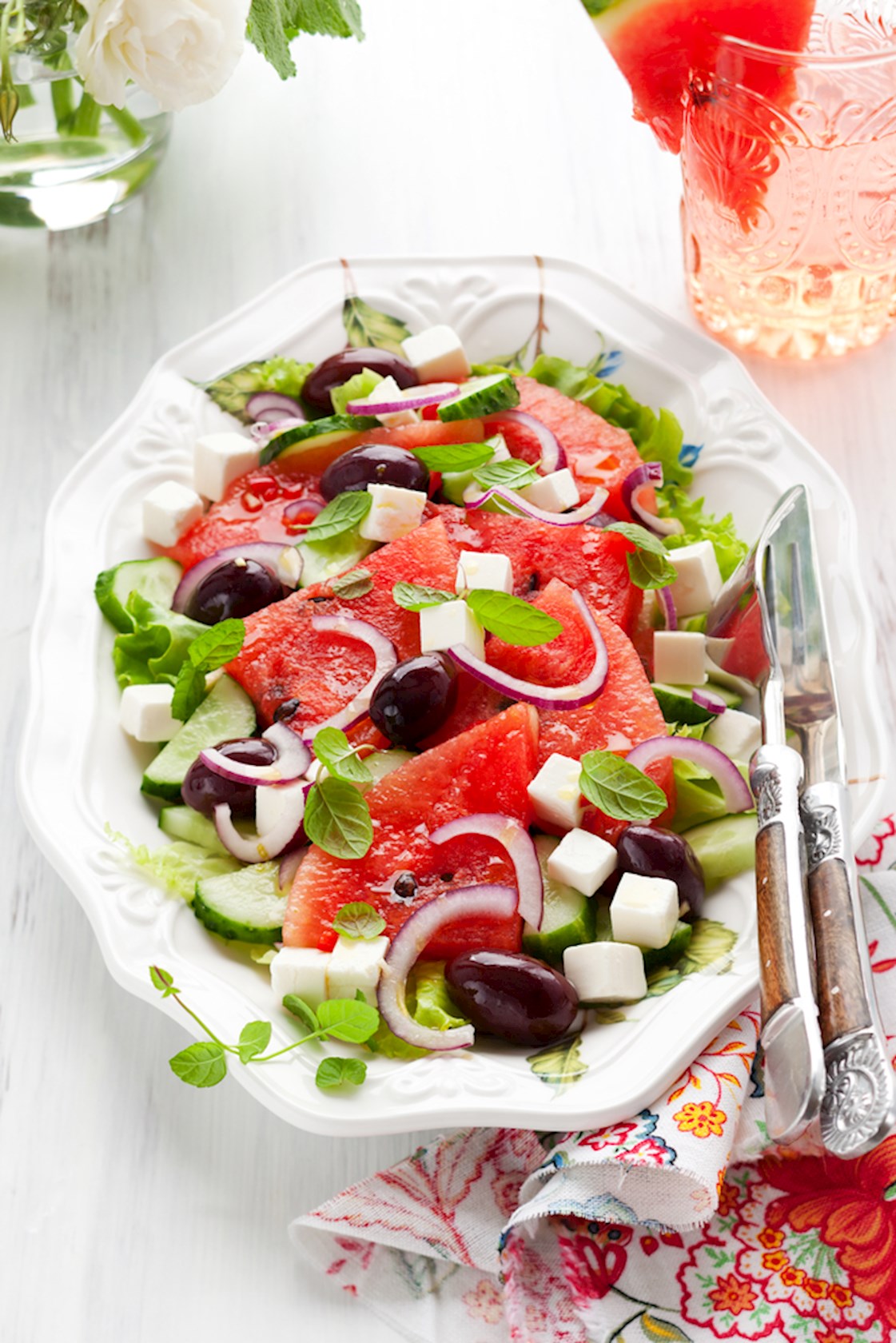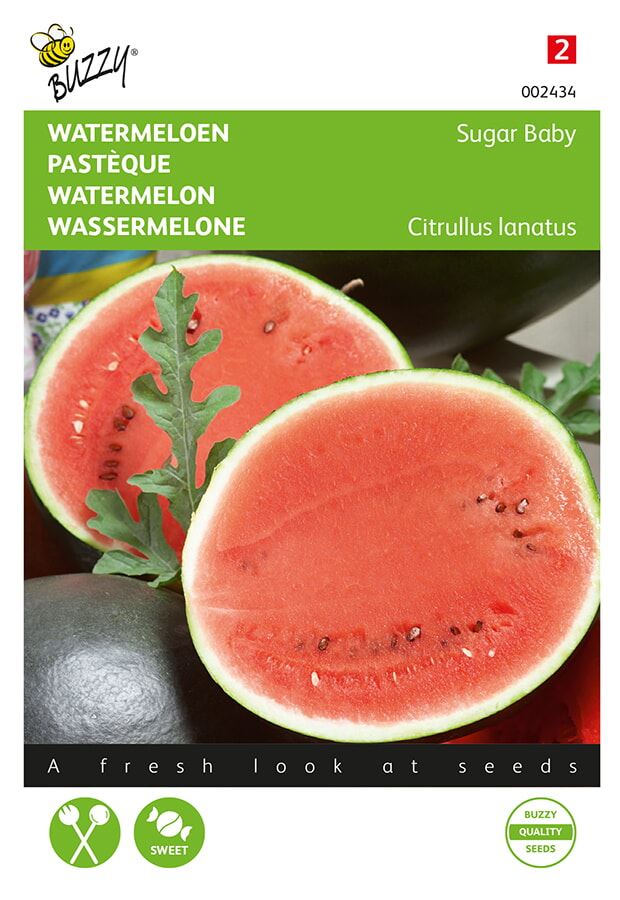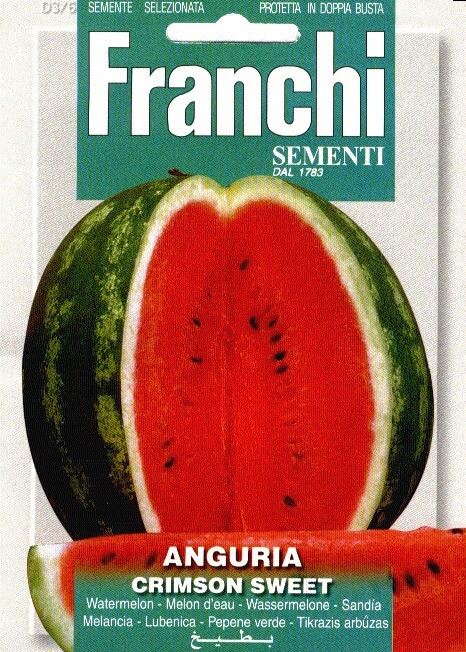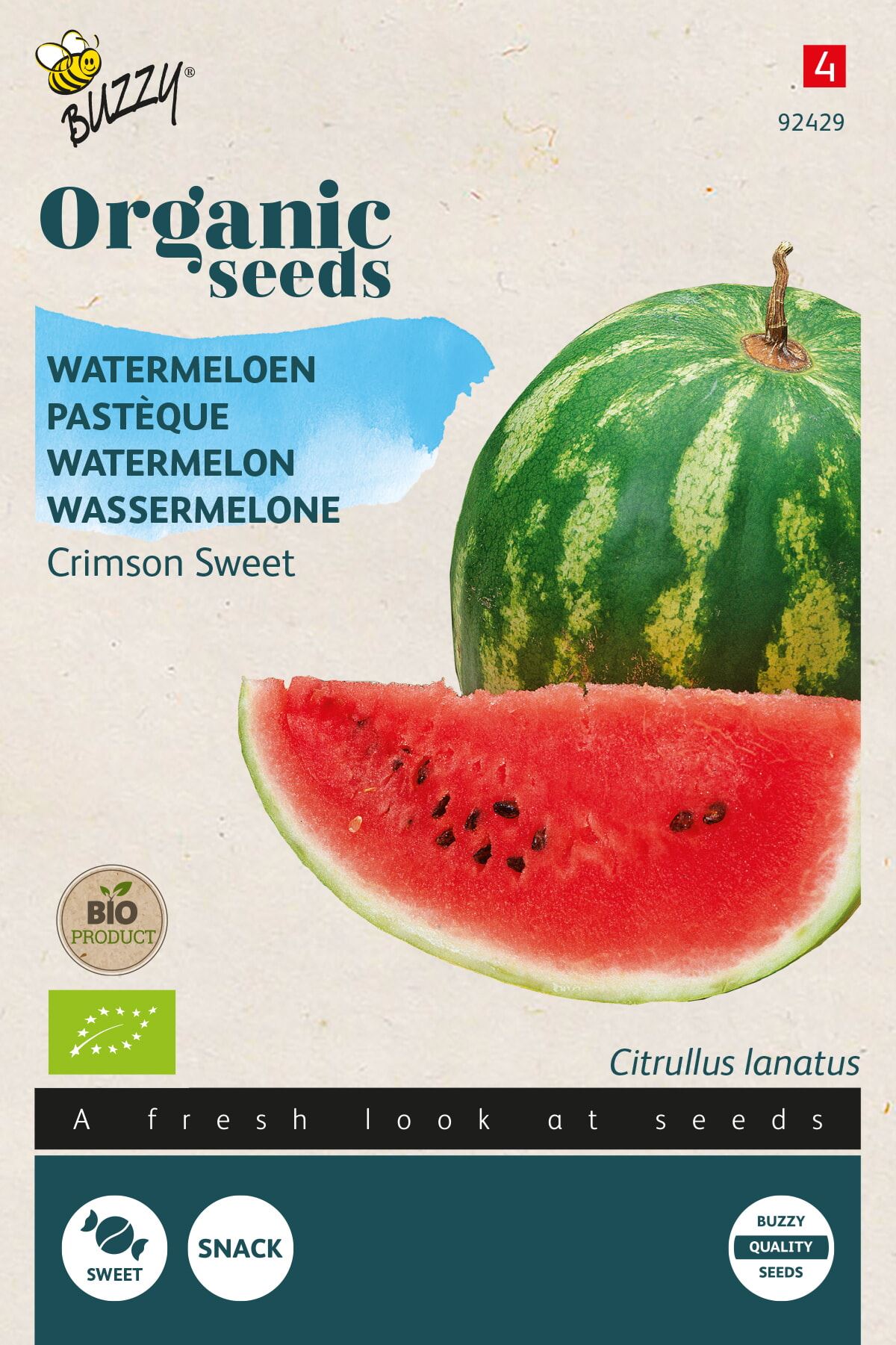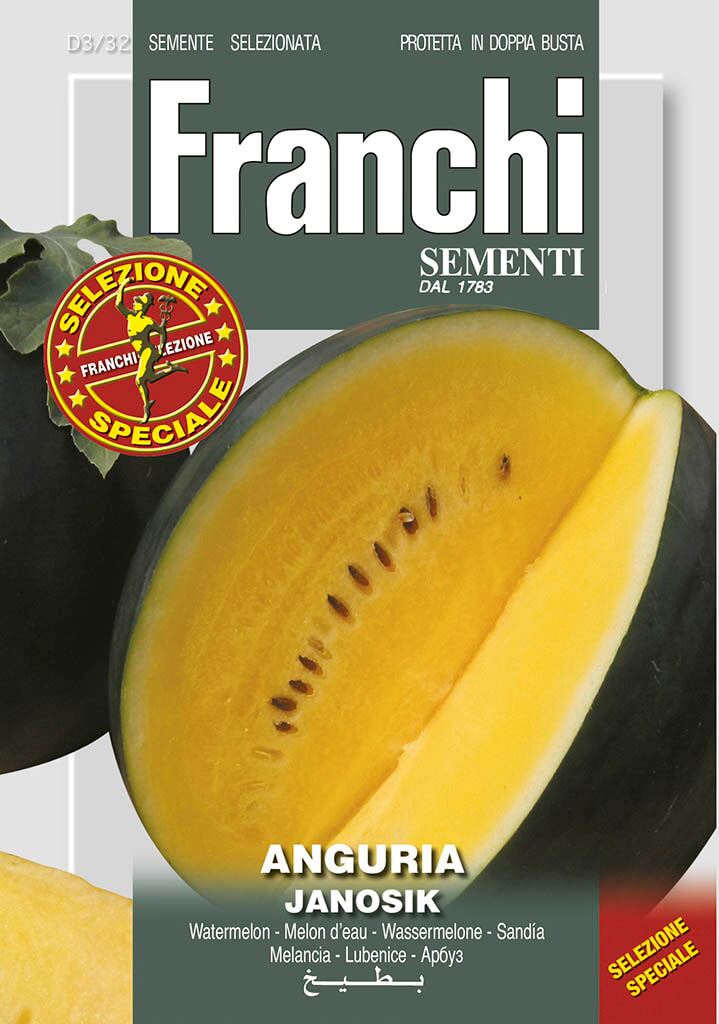Watermelon - pressing block 10x10 cm
Watermeloen
Product information "Watermelon - pressing block 10x10 cm"
The watermelon is a typical summer fruit; in a hot summer it is most delicious when cold: juicy, crisp and sweet in flavor. Despite what the name might suggest, the watermelon is not related to the melon and comes in many shapes and sizes. The rule is: the bigger the fruit, the longer the cultivation but especially the warmer the summer season has to be. So in our region you can do much better with the smaller varieties.
PLANTING:
Watermelons like a soil that holds moisture (after all, a watermelon is made up of over 90% water). Be careful, though, because a soggy soil is more likely to produce fungal diseases and rotting roots. A good amount of compost underplanting helps aerate the soil. Don't give too much fertilizer: the plant will become too vegetative (lots of leaf mass but no fruit). Some cow manure pellets are often sufficient, and a handful of patent potash can ensure good fruit set, tasty flavor and shelf life.
GROWING TIPS:
Although you can make the plant of a watermelon climb, because of the heavier fruit it is more interesting to just let it 'crawl'. Also in the watermelon, the female and male flowers are easily recognizable; just like in melons, pumpkins and cucumbers, the female flowers already have a small fruit behind their flower, in this case one of about 1 to 2centimeters in size. With the male flowers, the flower is on a narrow stalk. Watermelons are even more heat-loving than regular melons. In a hobby greenhouse, it usually works but outdoors it becomes a bit more difficult. You will have to use the warmest and sunniest spot in your garden and hope for a nice summer. In the greenhouse, pollination can be more difficult, because of a lack of insects. Pollinate by hand - in the morning with a cotton bud first along the male and then along the female flowers - and in summer, if possible, leave the greenhouse door open during the day and in the evening so that insects can fly in freely. You don't need to prune watermelons: they don't make as big a plant as most regular melons. Water at the roots and not on the leaves (to prevent fungal diseases). Water sufficiently but not too much, and make sure the excess water can get away. It can also be helpful, if the soil is still cold, to warm the water slightly until it is lukewarm (obviously not hot!) before you give it. Opening the windows in the greenhouse and in the flat is, as said before, also necessary to enable pollination by insects. It is useful to put the developing melons on a board or tile: this way they stay dry and don't rot. Once watermelons are big enough don't water as often or as much, enough for the plant to live and grow but the watermelons themselves are big enough; they just need to ripen.
HARVEST AND STORAGE:
It is very difficult to tell when a watermelon is ready for harvest. There are no visible signs that the fruit can be harvested. If you can press the stem of the watermelon slightly and the skin springs back nicely, you can harvest it. Likewise, if the melon sounds hollow when you tap the palm of your hand on the fruit. A slightly perceptible melon smell is also an indication. A watermelon will also not become 'overripe' so quickly.
Product specifications
| Application / use plant: | Unknown - n/a |
|---|---|
| Bloom Month: | Unknown - n/a |
| Bloom color: | Yellow |
| Branches / bark: | Unknown - n/a |
| Dutch plant name: | Watermeloen |
| Frost resistance: | Not winter hardy |
| Fruit: | Unknown - n/a |
| Growth habit : | Unknown - n/a |
| Humidity/Soil: | Normal soil |
| Latin plant family: | Cucurbitaceae |
| Leaf / Foliage: | Green |
| Location: | Full sun |
| Minimum growing height (in cm): | 150 |
| Plant characteristic: | Fruit-bearing, Fruit vegetables |
| Winter foliage: | Losing leaf |
| maximal growth height (in cm): | 250 |
| type of crop: | Annuals, Fruit |
| type of soil: | Normal soil |
Pictures of this plant
Reviews
Login











